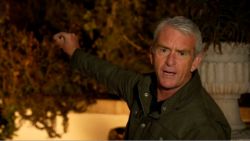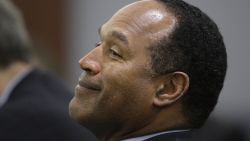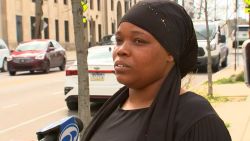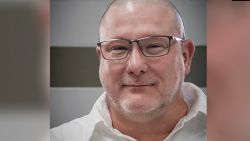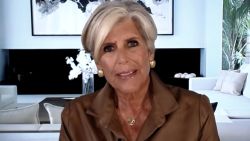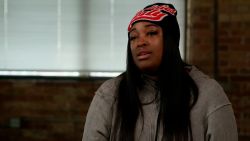Kyle Rittenhouse, the teenager who killed two people and shot another during unrest in Kenosha, Wisconsin, was acquitted Friday of first-degree intentional homicide and four other felony charges.
Rittenhouse, wearing a dark jacket with a burgundy tie and shirt, stood behind the defense table as each not guilty verdict was read. He tried to hold back tears, then sobbed and appeared to collapse forward on the table, where his attorney embraced him.
In a video promoting a Tucker Carlson Originals special on the case, Rittenhouse tells someone as he is apparently driven away from the courthouse: “The jury reached the correct verdict. Self-defense is not illegal. And I believe they came to the correct verdict and I’m glad that everything went well.
“It’s been a rough journey, but we made it through it. We made it through the hard part.”
Carlson’s crew has been embedded with the teen throughout the trial and the Fox News host will interview Rittenhouse on his Monday show. The documentary will air in December on the Fox Nation streaming service, Fox News said.
Rittenhouse’s mother gasped after the final verdict was read, her head falling into her hands.
The panel of five men and seven women deliberated more than 25 hours over the past four days in a closely-watched case that polarized an already divided nation. The verdict cannot be appealed.
These are the five charges the jury considered
Gov. Tony Evers, in a statement, called for peace on the streets and said the trial has “reopened wounds that have not yet fully healed.”
During their deliberations, jurors requested to rewatch much of the video evidence of the shootings. In the end, they agreed with Rittenhouse’s testimony that he feared for his life and acted in self-defense.
Verdict sheets filed with the Kenosha County Clerk of the Circuit Court showed the presiding juror in the case signed the not guilty verdicts to the five charges on different dates.
Three verdict sheets were dated Wednesday and Thursday. The most severe charge Rittenhouse faced was a first-degree intentional homicide charge for the fatal shooting of Anthony Huber: count 4. Juror 54 signed the verdict sheet for that count Wednesday.
The two sheets signed Friday involved the fatal shooting of Joseph Rosenbaum and the charge of reckless endangerment of a man who was near Rittenhouse during the shooting.
Judge praises jury
Since the shootings on August 25, 2020, the case pitted Americans who saw Rittenhouse as an armed teen vigilante against those who viewed him as a citizen taking up arms to protect businesses from looters and rioters.
The judge praised the jurors, saying he “couldn’t have asked for a better jury.”
Some jurors appeared fatigued as the verdicts were read – their hands on their chins or rubbing their eyes, according to a pool reporter. Others seemed ill-at-ease, arms folded across their chests.
Things we’ve learned from the trial that challenge assumptions about the case
What’s next for Rittenhouse
Rittenhouse attorney Mark Richards said outside court that his client was on his way home and “wants to get on with his life.”
“He has a huge sense of relief,” Richards told reporters.
“He wishes none of this would have ever happened. But, as he said when he testified, he did not start this and we’re thankful in more ways than one that the jury finally got to hear the true story.”
Richards said the decision to put Rittenhouse on the stand “wasn’t a close call.”
“In Wisconsin, if you don’t put a client on the stand, you’re going to lose. Period,” Richards added.
The attorney said Rittenhouse has had 24-hour security and does not expect to continue to live in the area.
“I think eventually some anonymity will come,” Richards said.
David Hancock, a spokesman for the Rittenhouse family, told CNN affiliate WBBM the “goal is to ensure Kyle’s safety as he moves on as an 18-year-old young man in college studying to be a nurse.”
Here’s what we know about the three men Rittenhouse shot
Prosecutor ‘disappointed’ with verdict
After the verdict, lead prosecutor Thomas Binger told the court, “The jury has represented our community in this trial and has spoken.”
Binger, in a statement, said, “While we are disappointed with the verdict, it must be respected… We ask that members of our community continue to express their opinions and feelings about this verdict in a civil and peaceful manner.”
Huber’s family said in a statement “there is no accountability for the person who murdered our son.”
“It sends the unacceptable message that armed civilians can show up in any town, incite violence, and then use the danger they have created to justify shooting people in the street,” the statement said of the verdict.
“We hope that decent people will join us in forcefully rejecting that message and demanding more of our laws, our officials, and our justice system.”
Huber’s girlfriend, Hannah Gittings, was not surprised by the verdict.
“We know that this system is a failure,” she said.
Rosenbaum’s fiancée, Kariann Swart, said, “In this case, the victims’ lives don’t matter.”
Kimberley Motley and Milo Schwab, attorneys for Gaige Grosskreutz and Rosenbaum’s estate, said they will continue to seek justice.
“While today’s verdict may mean justice delayed, it will not mean justice denied,” they said in a statement. “We are committed to uncovering the truth of that night and holding those responsible to account.”
Prosecution faced uphill battle
The high-profile verdict generated mixed reactions, from the White House to the streets of Wisconsin.
President Joe Biden, in a statement, said the verdict “will leave many Americans feeling angry and concerned, myself included” but added people “must acknowledge that the jury has spoken.”
On a cold, sunny afternoon, mostly peaceful crowds gathered outside the courthouse. Protests were planned in several US cities Friday and Saturday, according to social media posts.
“We want the nation to know the nation that you live in now isn’t the … United States that we used to live in,” said Justin Blake, uncle of Jacob Blake, whose shooting by police last summer sparked the protests where Rittenhouse showed up with his gun.
The prosecution faced an uphill challenge from the start because Wisconsin law requires the state to prove beyond a reasonable doubt Rittenhouse did not act in self-defense. But there are limits to a self-defense claim.
“The defendant may intentionally use force which is intended or likely to cause death or great bodily harm only if the defendant reasonably believed that the force used was necessary to prevent imminent death or great bodily harm to himself,” the jury instructions explain.
One of the videos the jury asked to rewatch – a drone video showing Rittenhouse shooting Rosenbaum – was at the heart of a defense request for a mistrial in the case.
The deliberations came after a two-week trial highlighted by emotional and compelling testimony from Rittenhouse, the 18-year-old at the center of debates around self-defense, gun ownership and Black Lives Matter demonstrations. On the stand, he told jurors – and the viewing public – he acted in self-defense.
“I didn’t do anything wrong. I defended myself,” he testified.
Rittenhouse was charged with five felonies: first-degree intentional homicide, first-degree reckless homicide, attempted first-degree intentional homicide and two counts of first-degree recklessly endangering safety.
Jurors also considered lesser offenses for two of the five counts. If convicted on the most serious charge, Rittenhouse faced a mandatory sentence of life in prison.
Schroeder dismissed a misdemeanor weapons possession charge and a non-criminal curfew violation prior to deliberations.
The charges stem from the chaotic unrest last year in the wake of the Kenosha police shooting of Jacob Blake, a 29-year-old Black man. After instances of rioting and fiery destruction, Rittenhouse, 17 at the time, took a medical kit and an AR-15-style rifle and joined up with a group of other armed people in Kenosha on August 25.
There, Rittenhouse fatally shot Rosenbaum – who was chasing the teenager and threw a bag at him – and then tried to flee. A crowd of people pursued the teenager, and Rittenhouse shot at an unidentified man who kicked him; fatally shot Huber, who had hit him with a skateboard; and wounded Grosskreutz, who was armed with a pistol.
What happened in the trial
Prosecutors called 22 witnesses over the course of six days as they sought to show Rittenhouse acted recklessly that night and provoked Rosenbaum by pointing the rifle at him, setting off the ensuing series of events.
“That is what provokes this entire incident,” Binger said in closing arguments. “When the defendant provokes this incident, he loses the right to self-defense. You cannot claim self-defense against a danger you create.”
The prosecution portrayed the three other people who confronted the teen as “heroes” trying to stop what they believed to be an active shooting. Binger also questioned the teenager’s decision to take a gun into the city in the first place, calling him a “chaos tourist.”
On the stand, Rittenhouse testified he was defending himself when he shot four times at Rosenbaum, who he said had threatened him earlier, chased him, thrown a bag at him and lunged for his gun. Rittenhouse also referred to the three other people he shot at as part of a “mob” chasing him.
He became emotional and broke down into tears during his testimony as he began to recount the initial shooting, leading to a break in the case.
In closing arguments, defense attorney Richards said Rittenhouse feared for his life when he opened fire.
“Every person who was shot was attacking Kyle. One with a skateboard, one with his hands, and one with his feet, one with a gun,” Richards said. “Hands and feet can cause great bodily harm.”
The trial featured more than a dozen videos from the night that showed what happened before, during and after the shootings. Most of the facts of what happened that night were not up for debate – rather, at the heart of the trial was the analysis of Rittenhouse’s actions and whether they can be considered “reasonable.”
CNN’s Jason Kravarik, Mike Hayes, Carma Hassan, Cheri Mossburg and Chris Boyette contributed to this report.




